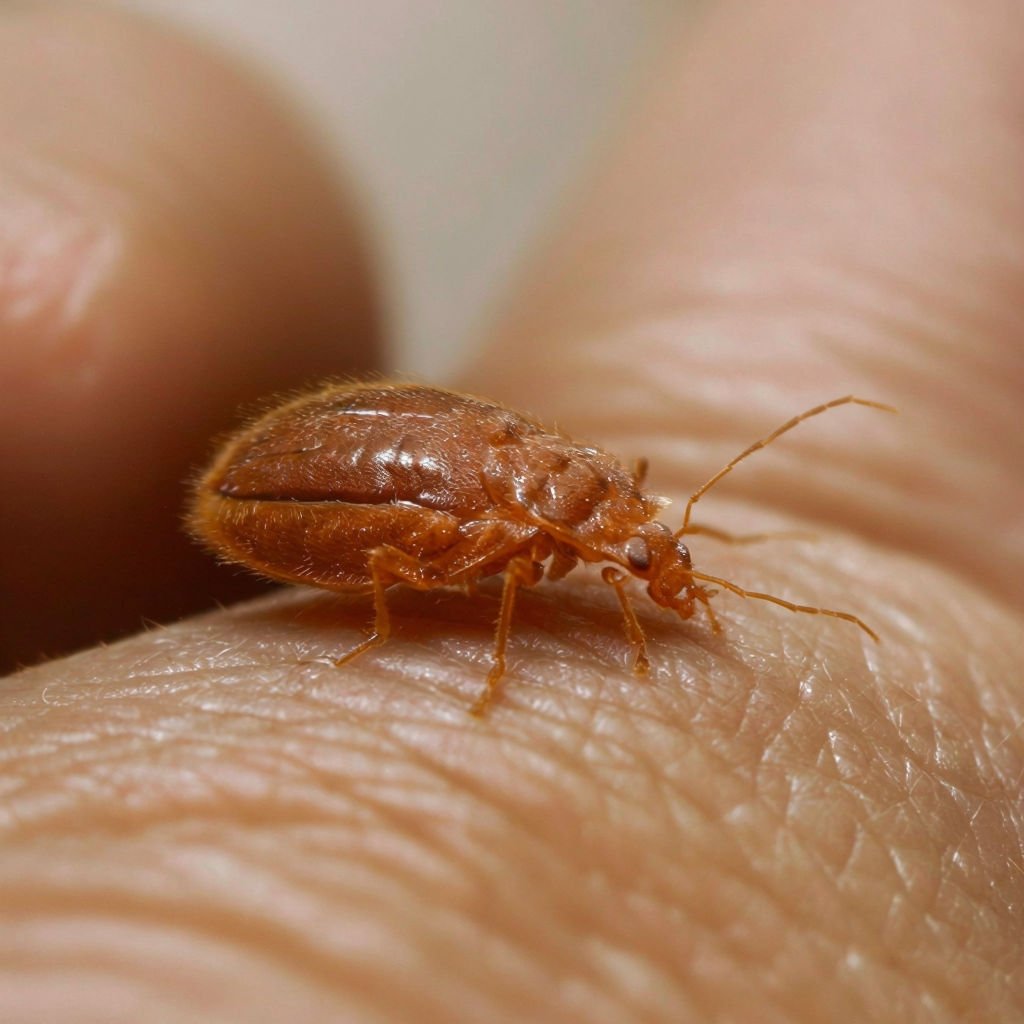- Residential Bed Bug Control
Contact us to learn more about our 24/7 emergency
Bed Bugs pest control service.
- Commercial Bed Bug Control
We offer our Bed Bugs control services for residential, commercial and industrial clients.

Expert Bed Bugs Pest Control Service in Sydney NSW
With over two decades of industry expertise, our bed bug pest control team has earned recognition for excellence, garnering awards for our superior service and results.
Our bed bug control services are tailored for residential, and commercial clients. Our pest control vehicles are equipped with the latest pest control products and equipment. We’re your all-in-one solution for all pest management needs.

Why Choose Us?
- Fast Response Time
- Expert Technicians
- Excellent Customer Service
- Eco-friendly Solutions
Get in Touch with Us
Our team has a strong history of success in both residential and commercial projects. We focus on every detail to make sure our clients are happy at every stage of the process.
Effective Bed Bug Control in Sydney
Bed bugs have become an increasingly prevalent issue in Sydney, causing sleepless nights and distress for many residents. As these tiny pests continue to spread across the city, the demand for professional bed bug control Sydney services has surged. This comprehensive guide will explore everything you need to know about bed bugs, their impact on Sydney homes, and how to effectively combat these persistent pests.
Understanding Bed Bugs in Sydney
Bed bugs are small, oval-shaped insects that feed on human blood. In Sydney, these pests have become a significant concern for homeowners and businesses alike. Here’s what you need to know about bed bugs in Sydney:
Bed Bugs Identification
Bed bugs are wingless insects with a rusty brown color, measuring about 4 to 5 mm in length when fully grown
Bed Bugs Habitat
In Sydney, bed bugs are commonly found in:
- Mattresses and bed frames
- Sofas and upholstered furniture
- Carpets and floorboards
- Behind wallpaper and picture frames
- Cracks in walls and wooden furniture
Bed Bugs Spread and Infestation
The incidence of bed bugs has increased dramatically in Sydney, particularly after the 2000 Olympic Games
- Luggage and personal belongings
- Second-hand furniture
- Public transportation
- Hotels and hostels
Signs of Bed Bug Infestation in Sydney Homes
Recognizing the signs of a bed bug infestation is crucial for early detection and effective bed bug control in Sydney. Look out for these indicators:
- Bite marks: Bed bug bites often appear in clusters or lines on exposed skin.
- Blood stains: Small blood spots on sheets and pillowcases.
- Dark spots: Bed bug excrement appears as dark, ink-like stains on fabrics and surfaces.
- Shed skins: As bed bugs grow, they leave behind moulted skins.
- Live bugs: Adult bed bugs may be visible in seams and crevices of mattresses and furniture.
- Musty odour: A sweet, musty smell often accompanies severe infestations.
Health Risks Associated with Bed Bugs in Sydney
While bed bugs are not known to transmit diseases, their presence can lead to various health concerns for Sydney residents:
- Allergic reactions: Some individuals may experience severe allergic responses to bed bug bites.
- Skin infections: Scratching bed bug bites can lead to secondary skin infections.
- Sleep disturbances: The stress and discomfort of bed bug infestations can significantly impact sleep quality.
- Psychological effects: Dealing with bed bugs can cause anxiety, stress, and even insomnia.
Professional Bed Bug Control Sydney Services
When facing a bed bug infestation in Sydney, it’s crucial to seek professional help. Expert bed bug pest control Sydney services offer comprehensive solutions to eliminate these persistent pests effectively.
Bed Bugs Inspection and Assessment
Professional bed bug control Sydney technicians begin with a thorough inspection of your property. This involves:
- Examining all potential hiding spots
- Identifying the extent of the infestation
- Assessing environmental factors contributing to the problem
Customized Bed Bug Treatment Plans
Based on the inspection results, bed bug pest control Sydney experts develop tailored strategies to address your specific situation. These plans may include:
- Chemical treatments: Application of safe, effective insecticides
- Heat treatments: Using high temperatures to eliminate bed bugs at all life stages
- Integrated Pest Management (IPM): Combining multiple approaches for long-term control
Bed Bug Removal Sydney
Modern bed bug pest control Sydney companies employ innovative technologies to enhance their services:
- SMART Digital Monitoring: 24/7 surveillance systems that detect and track bed bug activity
- Eco-friendly solutions: Environmentally conscious pest control options that minimize the use of harmful chemicals.
DIY Bed Bug Prevention Tips for Sydney Residents
While professional bed bug control Sydney services are essential for severe infestations, there are steps you can take to prevent bed bugs from entering your home:
- Inspect second-hand furniture before bringing it into your home
- Use protective covers on mattresses and box springs
- Vacuum frequently, especially around beds and furniture
- Reduce clutter to minimize hiding spots for bed bugs
- Be cautious when traveling and inspect hotel rooms for signs of bed bugs
Bed Bug Control Sydney Process
When you engage a professional bed bug pest control Sydney service, you can expect the following process:
1. Initial Consultation and Inspection
The pest control company will schedule an initial consultation to assess your situation. During this visit, they will:
- Conduct a thorough inspection of your property
- Identify signs of bed bug activity
- Determine the extent of the infestation
2. Treatment Plan Development
Based on the inspection results, the bed bug control Sydney experts will develop a customized treatment plan. This plan may include:
- Chemical treatments
- Heat treatments
- Combination approaches
3. Preparation for Treatment
Before the treatment, you’ll receive instructions on how to prepare your home. This may include:
- Washing and drying all bedding and clothing on high heat
- Decluttering to reduce hiding spots
- Moving furniture away from walls
4. Treatment Application
The bed bug pest control Sydney technicians will apply the chosen treatment methods, which may involve:
- Applying insecticides to affected areas
- Using heat treatment equipment
- Placing bed bug traps and monitors
5. Follow-up Inspections and Treatments
Most bed bug control Sydney services include follow-up visits to ensure the infestation has been completely eliminated. These visits may involve:
- Re-inspection of treated areas
- Additional treatments if necessary
- Advice on preventing future infestations
Choosing the Right Bed Bug Control Sydney Service
When selecting a bed bug pest control Sydney provider, consider the following factors:
- Experience and expertise in dealing with bed bugs in Sydney
- Use of safe, effective, and up-to-date control methods
- Positive customer reviews and testimonials
- Licensing and insurance
- Guarantees or warranties on their services
Long-term Bed Bug Prevention in Sydney
After successfully eliminating bed bugs from your Sydney property, it’s essential to implement long-term prevention strategies:
- Regular inspections: Conduct monthly checks of your bedding and furniture for signs of bed bugs.
- Protective measures: Use bed bug-proof encasements on mattresses and box springs.
- Travel precautions: When traveling, inspect hotel rooms and keep luggage off the floor.
- Prompt action: If you suspect a bed bug infestation, contact a bed bug control Sydney service immediately.
The Impact of Bed Bugs on Sydney’s Hospitality Industry
Bed bugs not only affect residential properties but also pose a significant threat to Sydney’s thriving hospitality sector. Hotels, hostels, and short-term rentals are particularly vulnerable to bed bug infestations due to the high turnover of guests.For Sydney’s hospitality businesses, maintaining a bed bug-free environment is crucial for:
- Protecting their reputation
- Ensuring guest satisfaction
- Avoiding potential legal issues
- Maintaining high occupancy rates
Many Sydney hotels and accommodations now partner with professional bed bug control Sydney services for regular inspections and preventive treatments.
Environmental Considerations in Bed Bug Control Sydney
As environmental awareness grows, many Sydney residents are seeking eco-friendly options for bed bug control. Some environmentally conscious approaches include:
- Steam treatments: Using high-temperature steam to kill bed bugs without chemicals
- Diatomaceous earth: A natural, non-toxic substance that dehydrates bed bugs
- Essential oil-based products: Some natural oils have repellent properties against bed bugs
While these methods can be effective for minor infestations, severe bed bug problems in Sydney often require more intensive treatments from professional bed bug pest control Sydney services.
The Future of Bed Bug Control in Sydney
As bed bugs continue to be a persistent problem in Sydney, the pest control industry is constantly evolving to meet the challenge. Future developments in bed bug control in Sydney may include:
- Advanced detection technologies: More sensitive and accurate methods for early bed bug detection
- Improved treatment methods: More effective and environmentally friendly bed bug elimination techniques
- Public awareness campaigns: Increased efforts to educate Sydney residents about bed bug prevention and control
Taking Control of Bed Bugs in Sydney
Bed bugs remain a significant concern for Sydney residents and businesses. However, with the right knowledge and professional assistance, these persistent pests can be effectively controlled and prevented. By understanding the signs of infestation, implementing preventive measures, and engaging reputable bed bug control Sydney services when needed, you can protect your home and health from these troublesome insects.Remember, when it comes to bed bugs in Sydney, early detection and professional intervention are key. Don’t hesitate to reach out to a trusted bed bug pest control Sydney service at the first sign of an infestation. With their expertise and advanced treatment methods, you can reclaim your peace of mind and enjoy a bed bug-free home in Sydney.
